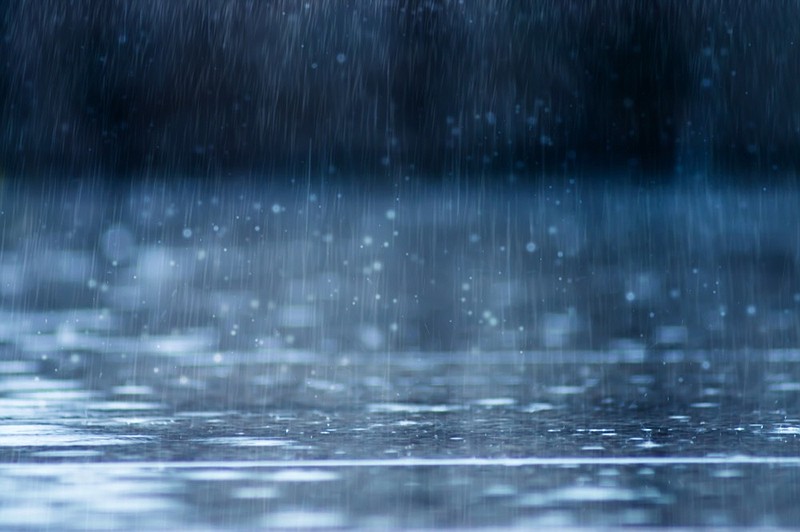We've just lived through the wettest 12 months in the Tennessee Valley's 131 years of recorded rainfall history, according to the Tennessee Valley Authority.
From October 2019 through September 2020, the Tennessee River basin was drenched with 75.74 inches of rainfall - 50% more than normal. Also, for the first time, rainfall has been above average every month for 12 consecutive months.
Now, did we mention that Hurricane Delta - expected to pick up leftover energy and moisture from downgraded Hurricane Gamma - appears on track to affect the Tennessee Valley region this weekend, possibly bringing another couple of inches of rain or more to us, according to the National Weather Service?
"There is definitely a cyclical nature on hydrology, and we have tended to see prolonged periods of heavy rains and droughts in the past," said James Everett, manager of the Tennessee Valley Authority's River Forecast Center. "But the past three years have been the wettest years on record and have really been extraordinary."
That "but" is telling. The extremes are becoming more extreme.
Atmospheric scientist Katherine Hayhoe in late September spent an hour talking with Reuters and explained it this way: There's always been severe weather, she said, but climate change "is loading the dice against us" and making those severe extremes bigger and more frequent - like this year's record 10 hurricanes (once Delta comes ashore) to hit U.S. coastlines. Even now, in early October, there are eight more weeks of hurricane season.
And, no, Hayhoe is not just another "radical" who worked on the Nobel Peace Prize-winning Intergovernmental Panel on Climate Change. She is known as an upbeat evangelical Christian who studies climate change and finds no conflict between religious faith and science.
But let's talk just about Chattanooga - our wonderful city that straddles the Tennessee River - America's fifth biggest river and the drainage route for rainfall runoff from more than 20,000 square miles in parts of Tennessee, Georgia, Virginia and North Carolina.
That's makes our city the most vulnerable community for flooding in the region. And if our rainfall continues at its current pace, the calendar year 2020 from Jan. 1 through to Dec. 31 will be the wettest one on record, washing away 2018's record high year and swamping the region's second highest year on record, 2019.
Now lets talk about infrastructure - the dams that help control that mighty river that makes Chattanooga all that it is.
Before the creation of TVA in 1933, Chattanooga was nearly completely underwater during major floods in 1867 and again in 1917.
In 1867, the city's worst-ever flood, raging water destroyed the city's only bridge over the river - a gap that took 24 years to fill - and set back the railroad town's recovery from the Civil War.
In 1917, the river flowed down Main Street and left about 4,000 people homeless - about 8 percent of the city's then-population of 50,000. Those and other floods prompted city officials to haul in fill dirt from high spots to make the second floors of many downtown buildings into new first floors, turning the original first floors into basements. We call that labyrinth of history Underground Chattanooga.
Sure, we still have flooding - ask East Ridge residents and others who live along Chickamauga, South Chickamauga and North Chickamauga creeks.
But the network of 49 dams on the Tennessee River and its tributaries built by TVA - the federal agency created by Franklin Roosevelt to help make jobs during the Great Depression and bring economic opportunity to the South - has averted $780 million of flood damage in Chattanooga and nearly $1 billion in damage in the region just in the calendar year of 2020, according to TVA. That estimate rises to $9 billion if the lens is widened to include TVA's 87-year history.
However, more than half of those dams - 29, in fact - aren't just flood infrastructure; they're also green infrastructure. They produce power. Carbon-free power. Pollution-free power. Renewable power. And about 10 percent of all power produced by TVA.
We could say Roosevelt was a Green New Deal socialist looking for resilience in a changing world before any of that was cool. And clearly, as climate change escalates, we need to be just as visionary as Roosevelt was.
Hayhoe, with Reuters, talked about that kind of vision and about having hope in a world with worsening climate change. She said scientists like her have done the world a disservice by choosing "conservative ranges" in talking about the probabilities of climate change and its impacts.
Scientists tend to err on the side of what one study calls "least drama," meaning they tend to agree on the lowest common denominator. But while working recently with infrastructure engineers to design "resilient" bridges, roads and culverts against "record" weather events, she has adopted a new view.
"The biggest lesson we learned was that an engineer's definition of conservative is exactly the opposite of a climate scientist's. An engineer's definition of conservative is the worst case scenario, times two or four or, if they're very conservative, 10. Because human lives are at risk. I think the engineers have it right. Because if it's human life that's at stake - if it's human civilization that's at stake, and that is what really is at stake - shouldn't we be erring on the side of making sure we really will be okay rather than just giving ourselves a 50/50 chance of making it?"
That's the kind of visionary thinking we need.
